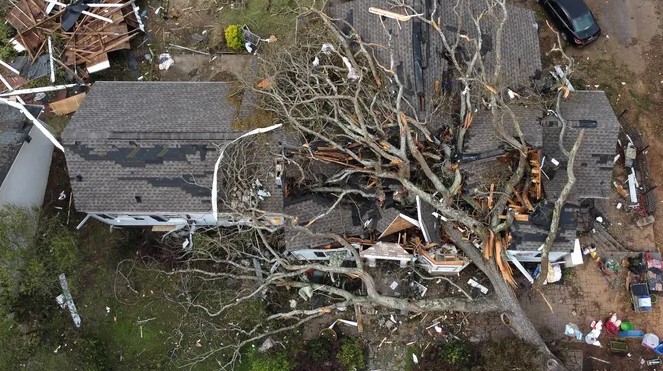President Joe Biden declared an emergency for Mississippi on Sunday, releasing federal funds to aid Carroll, Humphreys, Monroe, and Sharkey counties, which were devastated by a deadly tornado on Friday night. This tornado struck the Mississippi Delta, one of the poorest regions in the U.S.
The storm claimed at least 25 lives in Mississippi and one in Alabama, injuring dozens more as it tore through towns for an hour.
Recovery crews resumed efforts to search through the wreckage of homes, businesses, and municipal buildings, as hundreds were left displaced.
Federal Emergency Management Agency (FEMA) Administrator Deanne Criswell planned to visit the state to assess the damage. John Boyle was appointed to oversee federal recovery operations, with funding available for temporary housing, home repairs, loans for uninsured property losses, and other assistance programs.

The tornado obliterated entire neighborhoods, destroyed homes, ripped off a church steeple, and toppled a water tower. The National Weather Service warned of more severe weather on Sunday, including high winds, large hail, and potential tornadoes in eastern Louisiana, south-central Mississippi, and south-central Alabama.
An EF-4 rating was given to the tornado, indicating wind speeds between 166 mph and 200 mph. The storm devastated Rolling Fork, a town of 2,000 people, reducing homes to rubble and flipping cars.
Other areas in the Deep South also faced damage from suspected tornadoes, with one fatality reported in Morgan County, Alabama.
Residents expressed shock and disbelief at the destruction. Rodney Porter, a local, described the scene as “total devastation,” with homes and vehicles stacked upon each other.
Annette Body, from nearby Belozi, felt “blessed” her home was spared, though she grieved for neighbors who lost everything.
Mississippi Governor Tate Reeves declared a state of emergency and pledged support for rebuilding efforts. He discussed the situation with President Biden and the state’s congressional delegation. Multiple shelters were opened for those displaced.
Preliminary reports indicated the tornado was on the ground for over an hour, covering at least 170 miles, a rare occurrence due to widespread atmospheric instability. The tornado’s path included Rolling Fork and continued northeast, affecting several rural communities.

